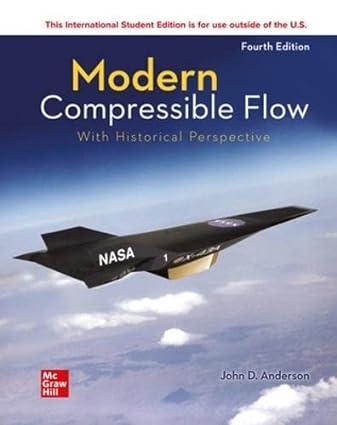Consider the (15^{circ}) half-angle wedge shown in Fig. 4.40. This is the same flow problem sketched in
Question:
Consider the \(15^{\circ}\) half-angle wedge shown in Fig. 4.40. This is the same flow problem sketched in Fig. 4.12, with the added feature of the expansion waves at the corners of the base. We make the assumptions that (1) the flow separates at the corners, with the streamlines trailing downstream of the corners deflected toward the base at an angle of \(15^{\circ}\) from the horizontal, as shown in Fig. 4.40, and (2) the base pressure \(p_{\mathrm{B}}\) is the arithmetic average between the pressure downstream of the expansion waves, \(p_{3}\), and the free-stream pressure, \(p_{1}\), i.e., \(p_{\mathrm{B}}=1 / 2\left(p_{3}+p_{1}\right)\). We emphasize that both of these assumptions are purely arbitrary; they represent a qualitative model of the flow with arbitrary numbers, and do not necessarily reflect the actual quantitative flowfield values that actually exist in the base flow region. On the basis of the model flow sketched in Fig. 4.40, calculate the drag coefficient of the wedge, and compare with the result obtained in Example 4.9 where the base pressure was assumed to equal \(p_{1}\).
Figure 4.40:

Data From Example 4.9:
Consider a \(15^{\circ}\) half-angle wedge at zero angle of attack in a Mach 3 flow of air. Calculate the drag coefficient. Assume that the pressure exerted over the base of the wedge, the base pressure, is equal to the free-stream pressure.
Step by Step Answer:






